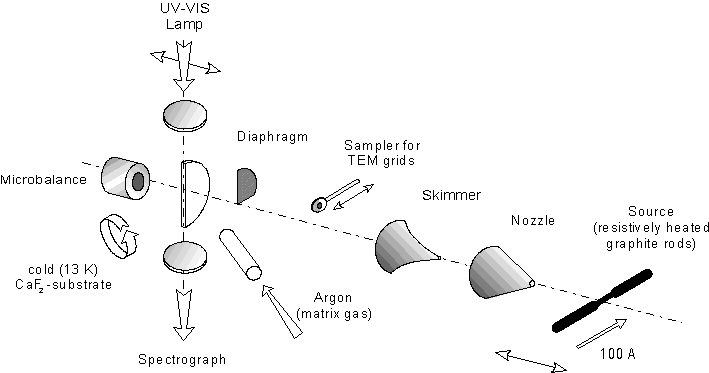The experimental setup combines the matrix-isolation spectroscopy with
the molecular/particle beam technique.
Both experimental methods are well established in molecular physics and
cluster physics.

Nano-particles are generated in different sources as graphite-rod evaporation, laser-induced gas pyrolysis, laser ablation or a molecular aggregation source
which all use a quenching gas for achieving supersaturation of the vapour.
Together with the quenching gas, the primarily condensed grains are extracted out of the condensation zone through the nozzle into a second chamber pumped separately to a pressure of about 10-3 mbar. Due to the drop in pressure during this supersonic expansion, the particles are decoupled from the gas and a further particle growth is stopped.
The sharp-edged skimmer peels a particle beam out of the free jet into a third chamber maintained at a pressure of about 10-5 mbar. In this chamber, particle samples for transmission electron microscopy (TEM) could be collected from the beam.
The swivel-mounted cold CaF2- or KBr-substrate (maintained at 13 K in a fourth chamber at 10-7 mbar) covers half of the beam cross section. The other half is used to monitor the mass rate by a quartz oscillator balance. The beam particles which reach the cold substrate are isolated in a growing solid argon matrix for spectroscopy, both in the UV/VIS and in the IR region. The diaphragm shuts half of the substrate which leads to a pure argon section for reference as well as thickness monitoring.
![]() Click
here to see a photo of the apparatus
Click
here to see a photo of the apparatus
[Laboratory main page]
[Institute home page]
[SiC main page]
[Amorphous carbon main page]
Last modified: Dominik Clément, Febrary 1999